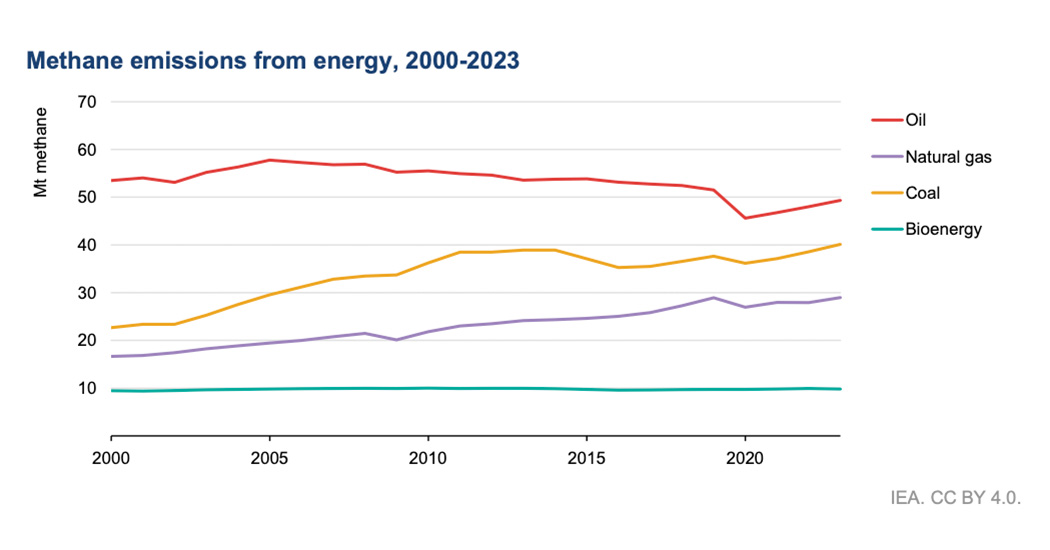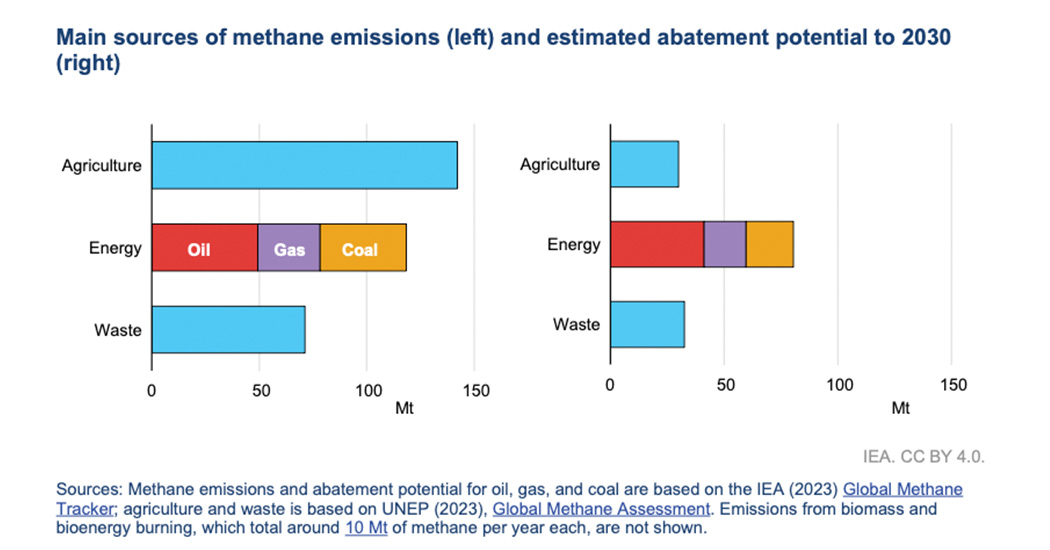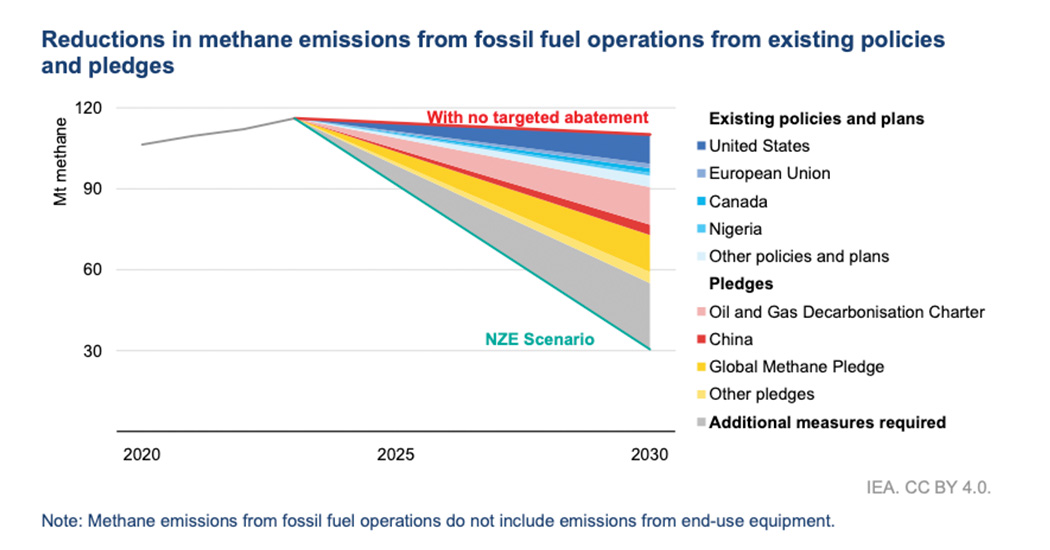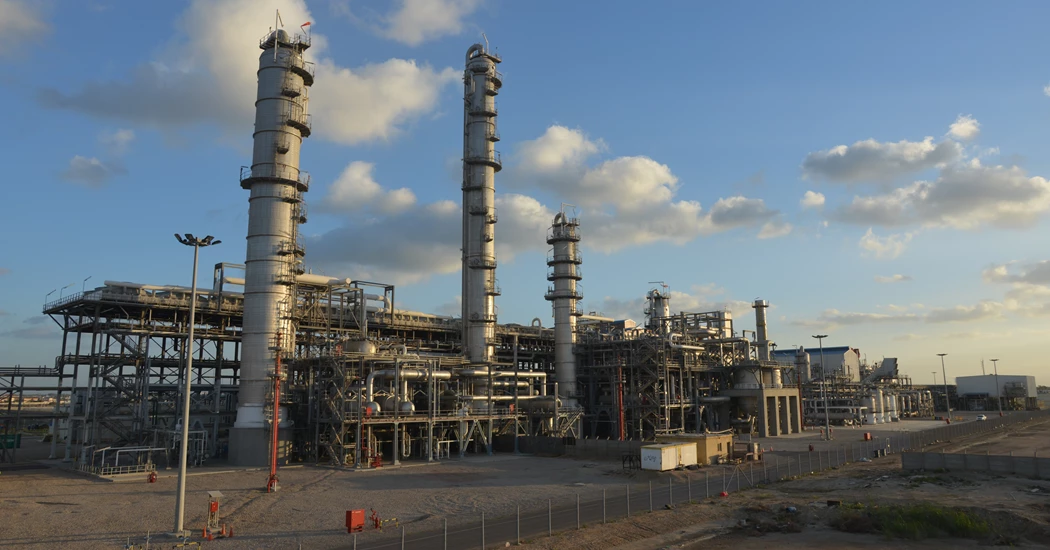Global methane emissions from fossil fuels set to decline soon, finds IEA study
Methane emissions from the energy sector remained near a record high in 2023 – but substantial policies and regulations announced in recent months, as well as fresh pledges stemming from the COP28 climate summit in Dubai, have the potential to put them into decline soon, according to a new report from the International Energy Agency (IEA).
The IEA’s latest update of its Global Methane Tracker is the first comprehensive assessment of global methane emissions since the COP28 climate summit concluded in December. The new IEA analysis finds that the production and use of fossil fuels resulted in close to 120 million tonnes of methane emissions in 2023, a small rise compared with 2022. Another 10 million tonnes of methane emissions came from bioenergy, mostly from the traditional use of biomass for activities such as cooking, the IEA said.

According to the report, the top 10 emitting countries were responsible for around 80 million tonnes of methane emissions from fossil fuels in 2023, two-thirds of the global total. The United States – the largest global producer of oil and gas – is also the largest emitter from oil and gas operations, closely followed by Russia. China is by far the highest emitter in the coal sector.
Satellites continue to bring the world’s understanding of methane emissions and their sources into sharper focus. The report, which incorporates their readings along with data from other science-based measurement campaigns, notes that satellites identified a substantial increase in major fossil fuel leaks in 2023 compared with 2022, with more than 5 million tonnes of emissions detected – including from a well blowout in Kazakhstan that went on for more than 200 days, the IEA said.
Global methane emissions remain far too high to meet international climate targets. To limit global warming to 1.5 °C, a key goal of the Paris Agreement, methane emissions from fossil fuels need to decline by 75% this decade, according to IEA analysis.

“A 75% cut in methane emissions from fossil fuels by 2030 is imperative to stop the planet from warming to a dangerous level. I am encouraged by the momentum we’ve seen in recent months, which our analysis shows could make an enormous and immediate difference in the world’s fight against climate change,” IEA Executive Director Fatih Birol said in a statement.
“Now, we must focus on transforming commitments into action – while continuing to aim higher. Well known policies and existing technologies could reduce methane emissions from fossil fuels substantially. The IEA stands ready to help the energy sector meet its goals by deploying these measures, and we will continue to monitor progress – a key part of our wider efforts to ensure countries deliver on the energy promises they made at COP28,” he added.
Accelerating efforts
Efforts to cut methane emissions are expected to accelerate in 2024 and beyond, with COP28 ushering in a step-change in ambition. Nearly 200 governments agreed at COP28 to “substantially” reduce methane emissions by 2030, while significant regulatory initiatives were announced by Canada, the European Union and the United States around the time of the summit. New companies have also committed to action through the launch of the Oil and Gas Decarbonisation Charter, and more countries are joining the Global Methane Pledge – including, most recently, Azerbaijan, which will host COP29.
If all methane pledges made by countries and companies to date are implemented in full and on time, it would be sufficient to cut methane emissions from fossil fuels by 50% by 2030, the IEA’s new analysis finds. However, most pledges are not yet backed up by plans for implementation.
Methane is responsible for almost a third of the rise in global temperatures since the Industrial Revolution, and the energy sector – including oil, natural gas, coal and bioenergy – is the second-largest source of methane emissions from human activity. While methane in the atmosphere dissipates faster than carbon dioxide, it is a much more powerful greenhouse gas during its short lifespan. As a result, driving down methane emissions is one of the best ways to limit global warming and improve air quality in the near term.

It is also extremely cost-effective. According to the IEA’s new analysis, around 40% of methane emissions from fossil fuel operations in 2023 could have been avoided at no net cost, since the value of the captured methane was higher than the cost of the abatement measure. Reducing methane emissions from fossil fuels by 75% by 2030 would require about USD 170 billion in spending – less than 5% of the income generated by the fossil fuel industry in 2023.
Meanwhile, a growing number of state-of-the-art satellites monitoring methane leaks, such as the Environmental Defense Fund’s recently launched MethaneSAT, is making it easier to identify and address them. These satellites are also filling in gaps and uncertainties that remain in the data by providing timely information that may otherwise be left out of disclosures. Currently, methane emissions implied by existing oil and gas company reporting are 95% lower than the IEA’s estimate for 2023, while emissions levels reported by countries are about 50% lower.
KEEPING THE ENERGY INDUSTRY CONNECTED
Subscribe to our newsletter and get the best of Energy Connects directly to your inbox each week.
By subscribing, you agree to the processing of your personal data by dmg events as described in the Privacy Policy.















